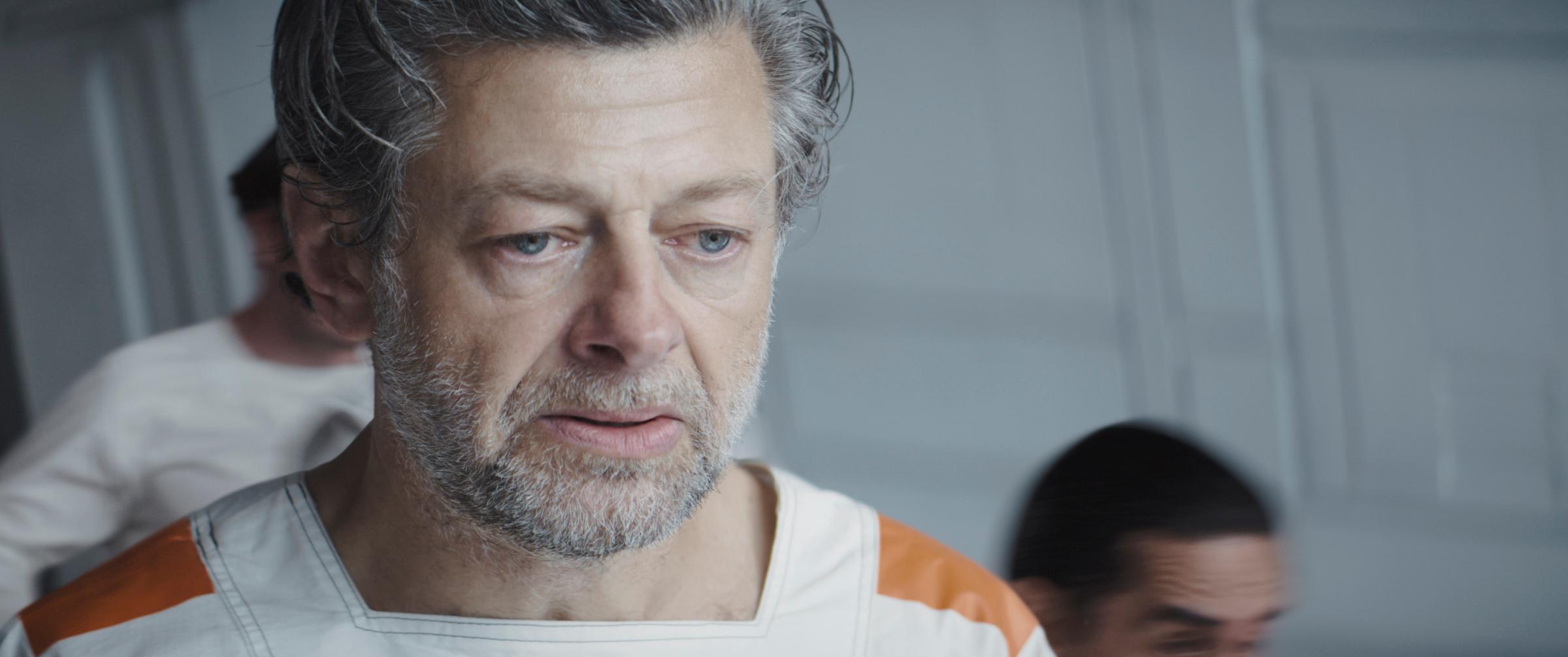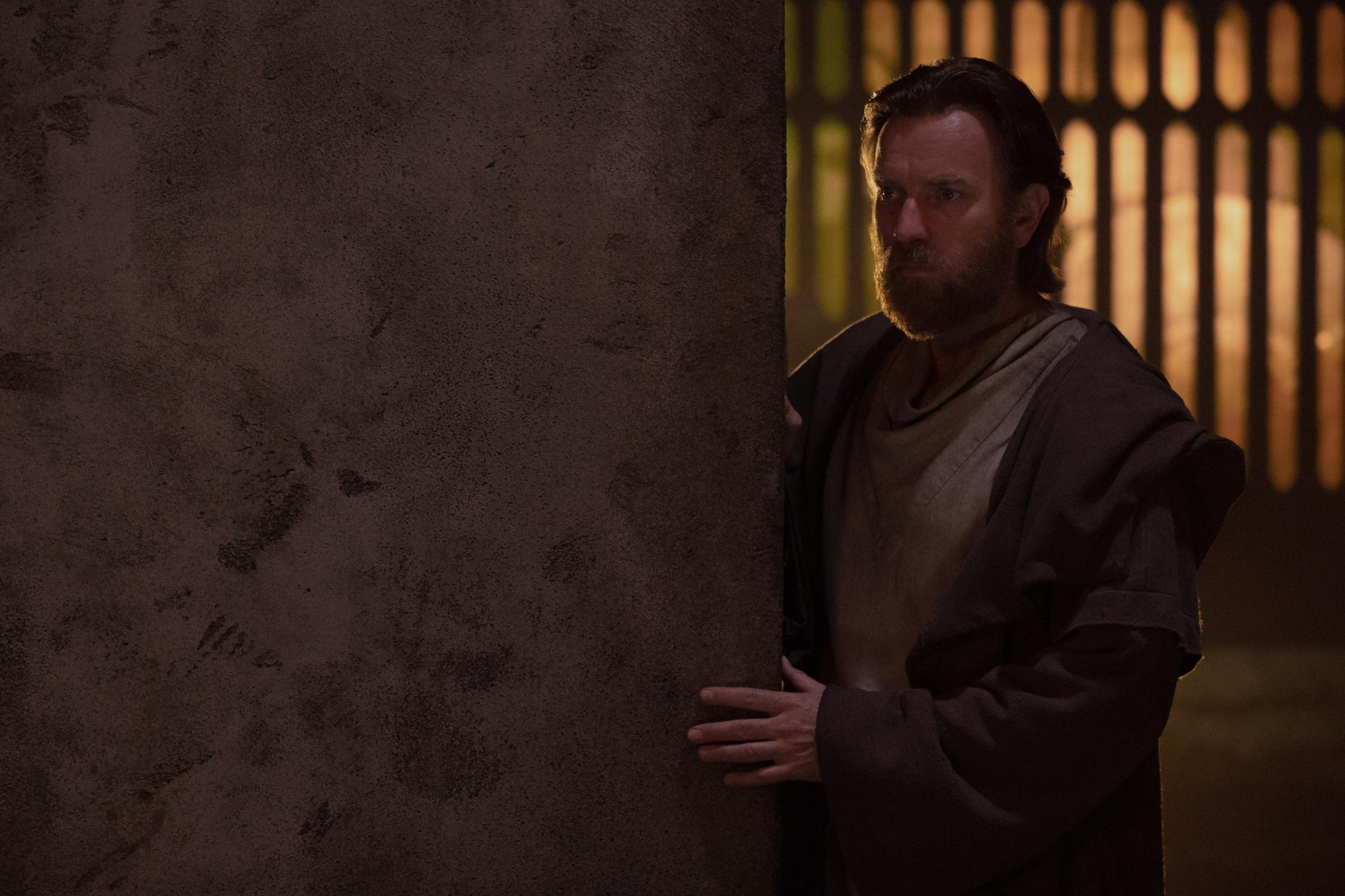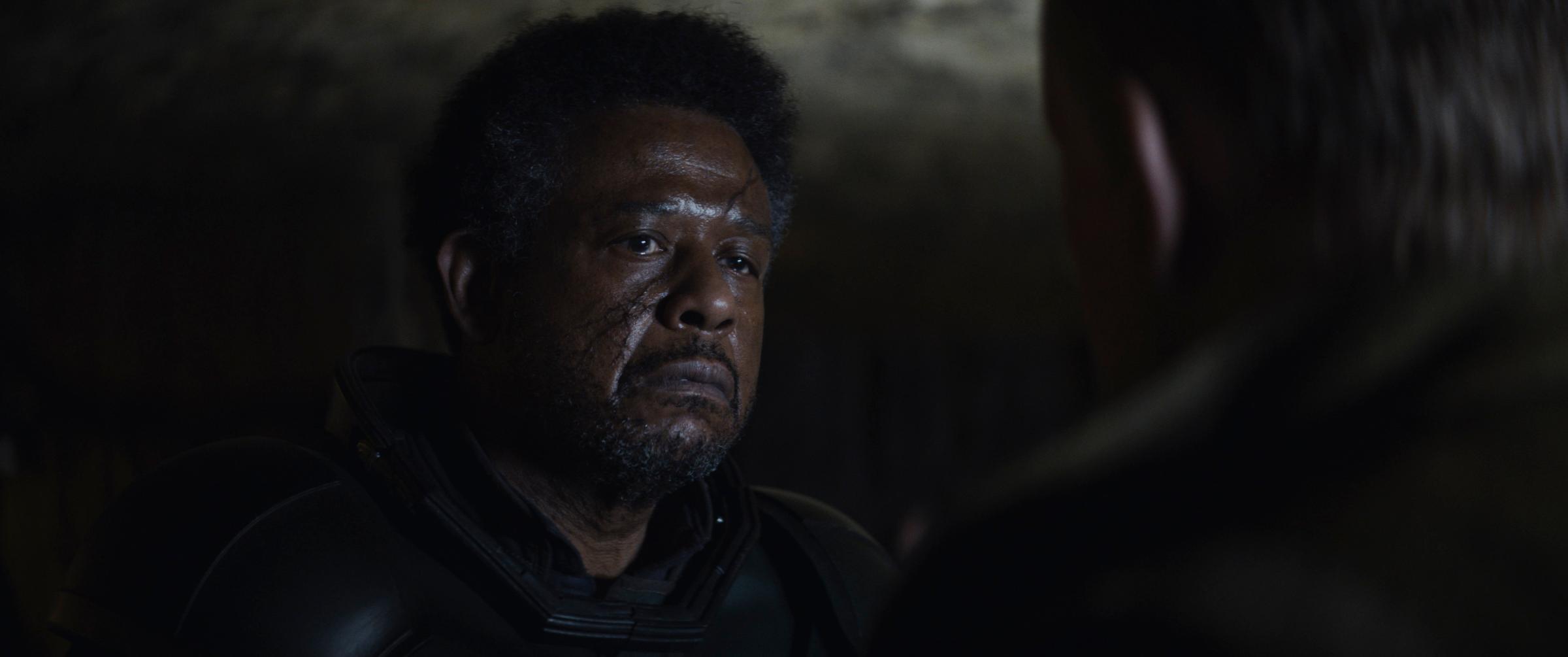Warning: This post contains minor spoilers for Andor
Like every other media company on earth, one of Disney’s motivations for churning out Star Wars content is to increase Disney+ streaming subscriptions (and to sell that Baby Yoda merch). Andor, Disney’s latest Star Wars spinoff, is doing none of that. Analytics groups, which often struggle to capture the full picture of who is watching what in the fractured streaming era, calculate that Andor is Star Wars’ least-watched live-action series to date.
The show is ostensibly a prequel to the 2016 film Rogue One, itself a prequel to the original Star Wars trilogy. And yes, its story centers on grim, murderous spies who can’t use the Force, and the series contains no adorable critters to slap on lunchboxes. The show staunchly refuses to feed Twitter and Reddit with Star Wars Easter eggs. But those aspects are what make Andor great, if not particularly marketable. What I approached skeptically as yet another Star Wars spinoff has turned out to be a thrilling—and chillingly relevant—indictment of fascism. It boasts some of the best writing I can recall in franchise fare.
I understand why certain Star Wars fans haven’t tuned in. We’ve been burned before. Fans of fantasy and sci-fi have endured endless spinoffs, sequels, and prequels. Most felt like pale imitations of their source material. That’s been particularly true of the latest Star Wars TV shows. Though the first season of The Mandalorian charmed adults and kids alike, The Book of Boba Fett, Obi-Wan Kenobi, and even the second season of The Mandalorian have never managed to reach the high of that first moment we saw Baby Yoda’s adorable little hand reach out of his futuristic bassinet.
By the time Andor debuted, I suspect it found a jaded audience either too exhausted by spinoffs or too busy finishing seasons of House of the Dragon or Rings of Power. The truth is, we’ll probably never know exactly how well Andor performed compared to those shows. Streaming services share little data, and what they do release is often recorded in minutes watched, as opposed to audience size, a maddening trend that makes comparing viewership across shows nearly impossible.
Still, Parrot Analytics found that demand for old seasons of The Mandalorian was equal to that of Andor from Oct. 29 to Nov. 4, and demand for the animated series Tales of the Jedi exceeded both of those shows. That’s far from ideal. And the audience that Andor is really catering to—people who love a taut thriller—are understandably suspicious of cinematic universe content with a patchy track record.
That’s too bad, because Andor is the best Star Wars show to date—by a long shot. People ought to be watching. In a bid to boost its viewership, Disney is presenting the first two episodes of Andor across several of its channels and platforms, including ABC, Freeform, FX, and Hulu over Thanksgiving weekend, an unprecedented move for a Disney show. But our current TV landscape has proven hostile to a series that abhors fan service and targets solely an adult audience, even if it cloaks itself in the trappings of franchise fare.
Andor is an even better thriller than Rogue One

Andor centers on Cassian Andor (Diego Luna), the spy who helped steal the Death Star plans in Rogue One that Luke would use to destroy the Empire’s greatest weapon in A New Hope. It would be fair to assume that the series would be chock-full of cameos and tie-ins to those films. Blessedly, it’s not.
Like Rogue One, Andor is focused on the sacrifice rebellion requires. All the main characters in Rogue One die during the mission to secure that Death Star intelligence—hence why you never see them or hear about them in the original Star Wars trilogy. The twist in that film worked so well exactly because nobody expected a Star Wars movie to be quite that brutal.
By the end of that movie, Cassian Andor is prepared to die for the cause. Andor turns back the clock to a time before Cassian was a rebel spy. When he’s first recruited to rebellion, he approaches any efforts to overthrow the Empire with skepticism. He’s more mercenary than radical. But as he executes missions, meets true believers, and finds himself on the wrong side of the Empire’s wrath, his mind begins to change. We watch in real-time how suffering transforms a person’s personal philosophy.
Divided into three-episode arcs, Andor’s 12-episode first season unfolds at a satisfying pace. The length of Andor allows creator Tony Gilroy (who also wrote Rogue One) to fully settle on each new planet the show visits and establish new characters, conflicts, and even a geography. By contrast, the serialized Mandalorian series, with a new adventure each episode, reads as frenetic. With Andor, Gilroy has put forth essentially four interconnected movies, all with their own players, arcs, and tragic moments.
Gilroy consistently subverts our expectations. His use of language is precise, and we’ll often hear the same turn of phrase uttered by both Empire stooges and the rebels, blurring the lines between good and evil. We’ve been taught by years of television to cheer on hardworking female characters who experience sexism in the office. One such character in this show earns our empathy in the first few episodes, but when she overcomes institutional barriers, we realize we never should have rooted for her in the first place: She’s a monster, and what’s scarier than an ambitious and efficient worker laboring on the side of evil?
Gilroy has long been interested in the inhumanity of spy-craft and the moral gray areas of bureaucracy: Along with the Star Wars movie Rogue One, he penned several of the Bourne Identity films and the Oscar-winning thriller Michael Clayton. He has found a like-minded collaborator in Beau Willimon, the showrunner of House of Cards, who wrote an excellent and deeply unsettling three-episode arc for Andor set in a labor camp: The plot has particular resonance at a moment when anti-Semitism and Holocaust denial is rampant. Without characters who wield the Force—or even that many aliens—in the show, the audience is forced to reckon with what normal people like them would do if confronted with fascism.
How Andor avoids typical prequel problems

As various franchises try to extend their lifespan with prequels, projects like Fantastic Beasts, House of the Dragon, and Rings of Power have all run into the same issues. Every beat can feel like a moment of fan service (look! the Mirror of Erised!); every twist a lame red herring (that dragon rider killed that other dragon rider in a slightly different way than you’d previously been told); every unnamed character inevitably a major player in the drama we’ve already seen (yep, that one guy was Sauron all along).
Building tension is difficult when the eventual fates of well-known heroes and villains loom large over the story. These projects succeed if they can make their audience invest in the unknown characters as much as the known ones, and if they can break free of the confines of “the canon.”
Andor rejects the very idea that its story needs to tie into the Star Wars universe beyond existing within it. While we know Cassian Andor must survive—until the events of Rogue One, anyway—Gilroy takes the time to write several new, compelling characters whose ends we do not know. Plenty of them die, which only underscores the crucial message of both Andor and Rogue One: Scores of forgotten heroes died to save the galaxy. They never got a medal ceremony. Indeed, after watching Andor, it seems rather cruel that Han, Luke, and Leia are celebrated for simply surviving when so many until-now anonymous rebels suffered and sacrificed far more than those three ever did.
Few easter eggs makes for a better show—and less chatter

Andor, to its credit, staunchly refuses to feed the internet the sort of Easter eggs and inter-franchise connections that fuel listicles and theory videos. Search YouTube for videos of fans watching the series, and usually loquacious Star Wars nerds simply sit there silent and slack-jawed as they watch the show.
There are no precocious kid versions of future heroes or shots of boots that could belong to a certain famous bounty hunter. The planets and characters are for the most part new and unrecognizable. That’s a major break from other Star Wars series: Even The Mandalorian, which maintained its distance from the main franchise in its first season, couldn’t resist reanimating Luke Skywalker for the Season 2 finale.
But social media thrives on fan service. Marvel’s WandaVision was a fascinating experimentation in form, but the plot point that set Twitter aflame was a major cameo that hinted the X-Men may be headed to the MCU. House of the Dragon jammed allusions to the “song of ice and fire” prophecy into its episodes as a feeble tie-in to the Game of Thrones plot hundreds of years in the future—and, inevitably, writers like myself churned out stories on what it could all mean. Even though Andor includes characters like Mon Mothma, who has been kicking around the Star Wars universe for decades, the show is more interested in fleshing out her story and motivations than in finding ways to get her in the same room as Bail Organa or Princess Leia.
Franchise fatigue is real

In retrospect, the premiere date for Andor was probably ill-advised. The spy thriller debuted on Disney+ just a few short weeks after the lackluster Obi-Wan Kenobi show aired its finale. Obi-Wan had been the most anticipated Star Wars series to date. Ewan McGregor was slated to return as the beloved character for over a decade before the show finally made its way to the screen. Millennials who grew up with the much-maligned prequels hoped that the show would somehow redeem the Obi-Wan-Anakin story. It didn’t.
Critics and fans walked away ever more convinced that these prequel shows simply could not work: The audience knows that Obi-Wan cannot defeat Darth Vader—one of the most iconic villains in the history of movies—in Obi-Wan. As a result, the show has no tension. What’s worse, Obi-Wan is now complicit in the mass murder of the entire planet of Alderaan by virtue of letting his old ward walk away when he had the opportunity to bring Vader’s reign to an early end. Not a great look for Old Ben Kenobi. Andor was tarnished by association.
Andor’s late September release date also fell in the midst of a slew of other major sci-fi and fantasy releases. Audiences were already inundated with episodes of House of the Dragon and Rings of Power, and TV journalists like myself were too busy breaking down the Targaryen family tree to tune into Andor in a timely fashion. By the time those shows wrapped, audience appetite for yet another franchise series had dwindled.
Disney+ is still figuring out how to market shows to adults

Andor announced its intentions early: Cassian kills a cop just minutes into the very first episode. But I don’t think Disney knows what to do with a show that argues you must sacrifice all that is good and innocent to violently throw off the shackles of oppression. After you finish an episode of Andor set in a labor camp, Disney+ will encourage you to watch Baby Yoda toddle around with a cup of tea next. The dissonance is jarring.
Disney has found success when the various entries in its franchise remain tonally similar. Perhaps with the exception of the somewhat scary Doctor Strange in the Multiverse of Madness, all of Marvel’s movies stick to a quip-punch formula, even when things get dark in Avengers: Endgame or Thor: Love and Thunder. They all fall under the general banner of “family friendly fare.” (HBO, by contrast, has moved in the opposite direction and turbocharged the blood, sex, and violence in its adults-only Game of Thrones franchise.)
Tonal consistency makes franchises easier to market: You can identify as a “Marvel fan” or “Game of Thrones fan,” and whenever you turn on a new show, you generally know what you’re getting. The downside is when you try to appeal to the widest possible audience, the edges get sanded down, and the product becomes less artistically sound.
Making an adult Star Wars TV show means losing the kids who delighted in Baby Yoda when they watched The Mandalorian, and probably many of their parents as well. Somewhat hampered by its family-friendly reputation, Disney+ has not figured out how to cater to multiple audiences on its platform. A lot of Disney’s more mature content winds up on Hulu, but Marvel- and Star Wars-branded shows have remained on Disney+, regardless of their intended audience. The show would have been more suited to FX or even HBO, if not for its galactic setting.
The future of Star Wars after Andor

Disney+ announced before the show even debuted that Andor would get two seasons, so its future was never in doubt. Elsewhere in the Star Wars universe, The Mandalorian will get a third season, and shows like Ahsoka and The Acolyte are on their way, along with a Lando Calrissian spinoff that’s been in the works for years. It’s doubtful that any of these shows will inspire Mandalorian levels of excitement given how saturated streaming services have become.
On the big screen, LucasFilm looks to be treading water. Every year the studio announces new projects with major talent—Wonder Woman‘s Patty Jenkins, Thor: Ragnarok’s Taika Waititi, Game of Thrones’ David Benioff and D.B. Weiss, Knives Out’s Rian Johnson, Marvel Studios’ Kevin Feige. We haven’t gotten an update on any one of their projects in months or, in some cases, years. A new Star Wars movie could debut on the silver screen in late 2025 at the absolute earliest, a full six years after J.J. Abrams’ The Rise of Skywalker premiered.
What remains unclear—beyond whether any of these projects will ever get made—is whether LucasFilm will offer these writers and directors free rein to make bold choices as Gilroy did in Andor or whether the studio will be spooked by Andor’s lack of buzz and pressure these artists to create more movies in the J.J. Abrams mold. I would love to see what a writer like Damon Lindelof, rumored to be working on a Star Wars project, would do with the universe. The brain behind excellent, thought-provoking series like The Leftovers and Watchmen ought to find some new angle into the story. But the future of Star Wars as an artistic endeavor may depend on what lessons Disney takes away from Andor’s run.
More Must-Reads from TIME
- Introducing the 2024 TIME100 Next
- The Reinvention of J.D. Vance
- How to Survive Election Season Without Losing Your Mind
- Welcome to the Golden Age of Scams
- Did the Pandemic Break Our Brains?
- The Many Lives of Jack Antonoff
- 33 True Crime Documentaries That Shaped the Genre
- Why Gut Health Issues Are More Common in Women
Write to Eliana Dockterman at eliana.dockterman@time.com